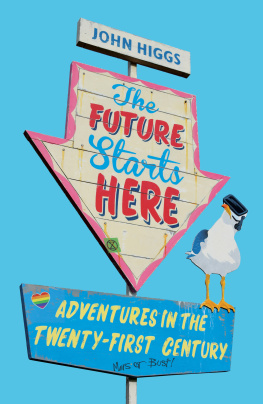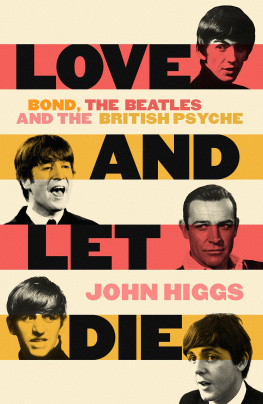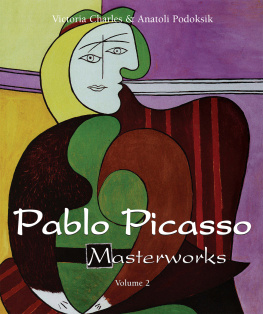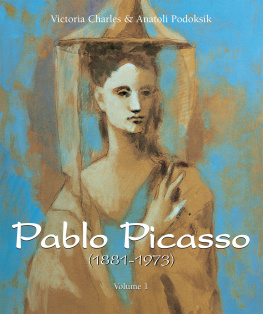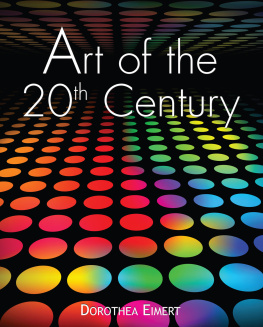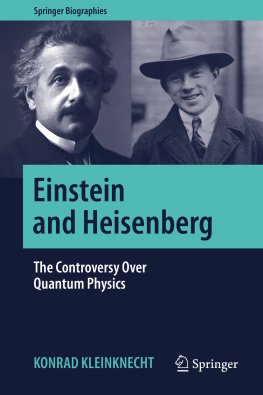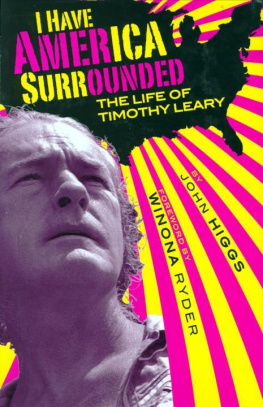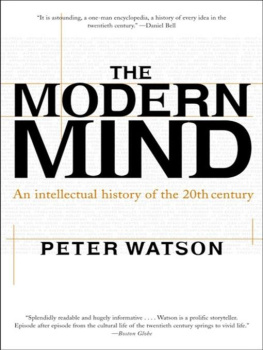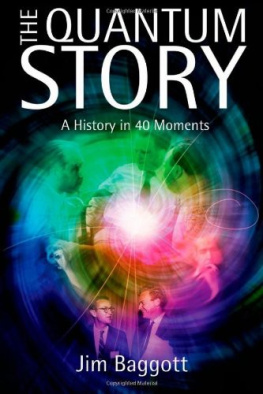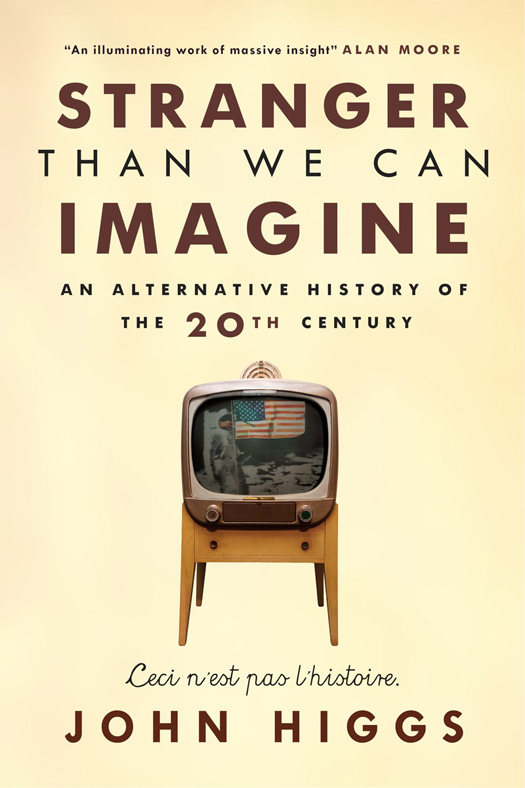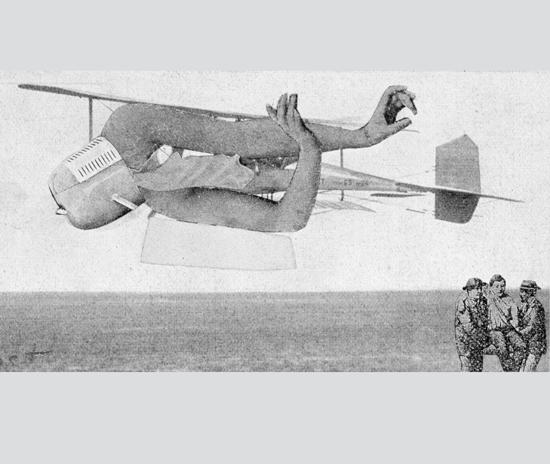By the same author
Non-fiction
The KLF: Chaos, Magic and the Band Who
Burned a Million Pounds
I Have America Surrounded: The Life of Timothy Leary
Our Pet Queen: A New Perspective on Monarchy
Fiction
The Brandy of the Damned
The First Church on the Moon
Copyright 2015 by John Higgs
Signal Books is an imprint of McClelland & Stewart, a division of Random House of Canada Limited, a Penguin Random House Company.
All rights reserved. The use of any part of this publication reproduced, transmitted in any form or by any means, electronic, mechanical, photocopying, recording, or otherwise, or stored in a retrieval system, without the prior written consent of the publisher or, in case of photocopying or other reprographic copying, a licence from the Canadian Copyright Licensing Agency is an infringement of the copyright law.
Library and Archives Canada Cataloguing in Publication
Higgs, John, author
Stranger than we can imagine : an alternative history of the 20th century / John Higgs.
Includes bibliographical references.
ISBN 978-0-7710-3847-1 (bound).ISBN 978-0-7710-3848-8 (html)
1. History, Modern20th century. 2. Twentieth century.
I. Title. II. Title: Twentieth century.
D421.H53 2015 909.82 C2014-907868-4
C2014-907869-2
First published in Great Britain in 2015 by Weidenfeld & Nicolson. Published simultaneously in the United States of America by Counterpoint Press.
Jacket design by Andrew Roberts
Jacket images: (astronaut on moon) Steven Taylor / Getty Images; (television) Wisconsinart / Dreamstime.com
McClelland & Stewart,
a division of Random House of Canada Limited
a Penguin Random House Company
www.penguinrandomhouse.ca

v3.1
For Lia, the twentieth centurys post-credits twist,
and for Isaac, the pre-game cutscene of the twenty-first century.
All love, Dad x
CONTENTS
We needed to do what we wanted to do
Keith Richards
Murdering Airplane by Max Ernst, 1920 (Bridgeman/ ADAGP Paris & DACS London 2015)
INTRODUCTION
I n 2010, the Tate Modern gallery in London staged a retrospective of the work of the French post-impressionist painter Paul Gauguin. To visit this exhibition was to spend hours wandering through Gauguins vision of a romanticised South Pacific in late nineteenth-century Tahiti. This was a world of vivid colour and guilt-free sexuality. Gauguins paintings saw no distinction between mankind, divinity and nature, and by the time you reached the end of the exhibition you felt as if you understood Eden.
Visitors were then spat out next to the Tates twentieth-century gallery. There was nothing to prepare them for how brutal walking out of one and into the other would be.
Here were the works of Picasso, Dal, Ernst and many others. You immediately wondered if the lighting was different, but it was the art that made this room feel cold. The colour palette was predominantly browns, greys, blues and blacks. Splashes of vivid red appeared in places, but not in ways that comforted. With the exception of a later Picasso portrait, greens and yellows were entirely absent.
These were paintings of alien landscapes, incomprehensible structures and troubled dreams. The few human figures that were present were abstracted, formal, and divorced from contact with the natural world. The sculptures were similarly antagonistic. One example was Man Rays Cadeau, a sculpture of an iron with nails sticking out of its base in order to rip to shreds any fabric you attempted to smooth. Encountering all this in a state of mind attuned to the visions of Gauguin was not recommended. There was no compassion in that room. We had entered the abstract realm of theory and concept. Coming directly from work that spoke to the heart, the sudden shift to work aimed solely at the head was traumatic.
Gauguins work ran up to his death in 1903, so we might have expected a smoother transition into the early twentieth-century gallery. True, his work was hardly typical of his era and only widely appreciated after his death, but the jarring transition still leaves us struggling to answer a very basic question: what the hell happened, at the beginning of the twentieth century, to the human psyche? The Tate Modern is a suitable place to ask questions like this, as it stands as a kind of shrine to the twentieth century. The meaning of the word modern in the art world means that it will be forever associated with that period. Seen in this light, the popularity of the gallery reveals both our fascination with those years and our desire to understand them.
There was one antechamber which separated the two exhibitions. It was dominated by an outline of a nineteenth-century industrial town by the Italian-Greek artist Jannis Kounellis, drawn directly onto the wall in charcoal. The sketch was sparse and devoid of human figures. Above it hung a dead jackdaw and a hooded crow, stuck to the wall by arrows. Im not sure what point the artist was trying to make, but for me the room served as a warning about the gallery I was about to enter. It might have been kinder if the Tate had used this room as a form of decompression chamber, something that could prevent the visual art equivalent of the bends.
The dead birds, the accompanying text suggested, have been seen as symbolising the death throes of imaginative freedom. But seen in context between Gauguin and the twentieth century, a different interpretation seemed more appropriate. Whatever it was that had died above that nineteenth-century industrial town, it was not imaginative freedom. On the contrary, that monster was about to emerge from the depths.
Recently I was shopping for Christmas presents and went into my local bookshop for a book by Lucy Worsley, my teenage daughters favourite historian. If you are lucky enough to have a teenage daughter who has a favourite historian, you dont need much persuading to encourage this interest.
The history books were in the far corner of the fourth floor, at the very top of the building, as if history was the story of crazed ancestors we need to hide in the attic like characters from Jane Eyre. The book I wanted wasnt in stock, so I took out my phone to buy it online. I went to shut down an open newspaper app, pressed the wrong icon, and accidentally started a video of a speech made by President Obama a few hours earlier. It was December 2014, and he was talking about whether the hacking of Sony Entertainment, which the President blamed on North Korea, should be regarded as an act of war.
Every now and again there is a moment that brings home how strange life in the twenty-first century can be. There I was in Brighton, England, holding a thin slice of glass and metal which was made in South Korea and ran American software, and which could show me the President of America threatening the Supreme Leader of North Korea. What about this incident would have seemed more incredible at the end of the last century: that this device existed, and allowed me to see the President of the United States while Christmas shopping? That the definition of war could have changed so much that it now included the embarrassing of Sony executives? Or that my fellow shoppers would have been so accepting of my miraculous accidental broadcast?


